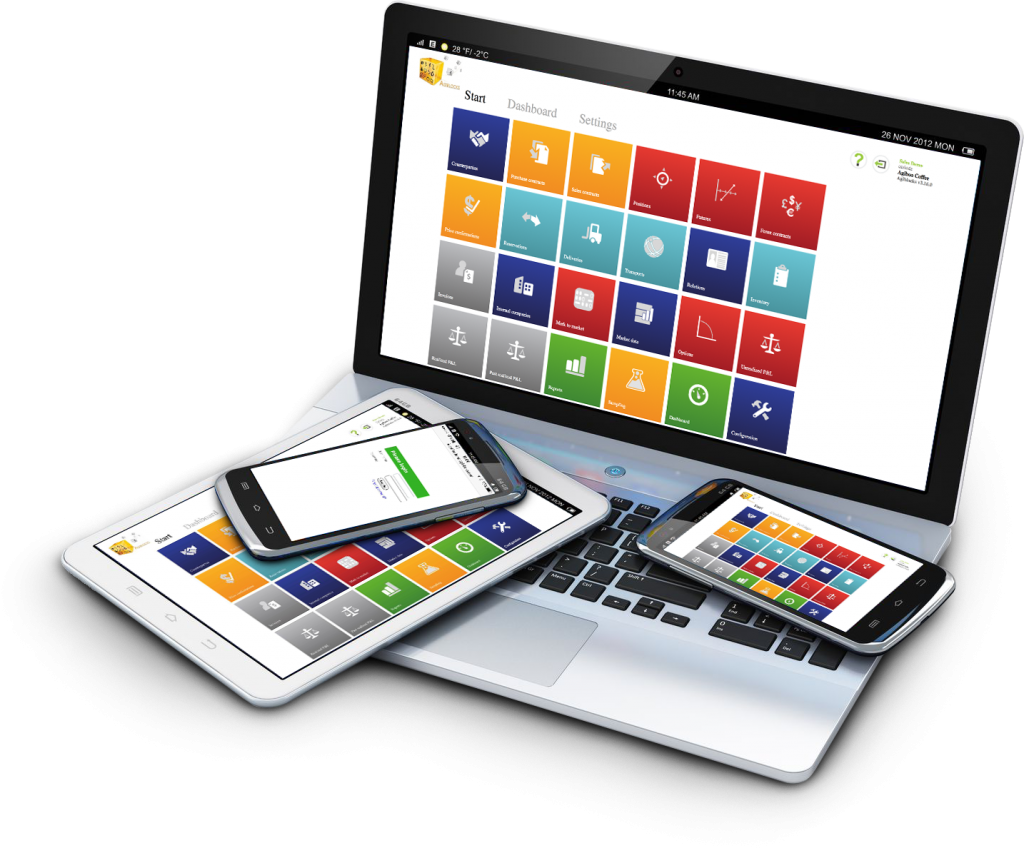While there are many CTRM software solutions on the market, there are but a few that can truly handle the unique aspects of sugar trading. We’re here to identity those characteristics in order to tackle all that needs to be included in any sugar-focused solution. It’s kind of an elaborate way of telling you Agiblocks is the solution for you if you’re buying, selling or trading sugar – but let’s not get ahead of ourselves.
Sugar, Sugar
Sugar is a sweet-flavored ingredient, used in many types of food and drinks around the world since ancient times. It can be found in pretty much every plant, but it can only be extracted – economically efficiently, that is – from sugarcane and sugar beet. Sugarcane is largely grown in tropical countries, while cultivation of beets can be found mostly in northern temperate zones. Combined production goes well into the billions of tons, while cultivation can be found in over two-thirds of the world’s countries.
The primary use and market for sugar is the food industry, where it is used as a sweetener, preservative, texture modifier, fermentation substrate, flavoring and coloring agent, bulking agent and to add decoration to food items, such as cakes. However, if it’s sweet facts you need, you’re better off reading our 10 interesting facts about sugar. In this article today we’ll be looking at this favored commodity in terms of its supply chain, markets, price formation and – most importantly – unique functional requirements in a CTRM solution.

The Complexities of Sugar
Commodity Trade and Risk Management solutions for sugar obviously need to be able to handle the general complexities of any particular commodity along with providing features such as usability, performance and integration. Different market and supply chain participants have different business objectives and/or processes, and it is essential for these participants to be able to manage, trade and arbitrage on and between these markets. A Sugar CTRM should be able to support these different processes and objectives.
In other words, sugar trading has a number of very specific aspects to it that should be functionally supported by a CTRM solution, for that CTRM solution to be effective.
Multiple Markets
Since there are multiple future markets for sugar, a CTRM solution for Physical Sugar needs to offer the flexibility to configure multiple trading books, each of them reflecting the hedging market to be used or a proxy of that hedging market.
Sugar is unique in the sense that it has two principal markets or products that can be converted to each other physically. Raw sugar can be processed and converted into white sugar and hence there is a differential known as the ‘white premium’ that can value the conversion. The premium can change daily based on things like fuel costs and needs to be tracked. The white premium has to be handled by a CTRM used for sugar explicitly for the usage of pricing, but also to support rolling the premium.
Polarization
Polarization is a quality measure. The clearer the sugar crystals, the less it costs to convert raw sugar into white sugar and therefore polarization (a quality measured using laboratory testing) is expressed in the contract and pricing terms.
This quality aspect is specific to sugar and also need to be tracked by the CTRM for pricing, and settlement purposes, but it’s also used to determine cost accruals and is utilized in valuation calculations to gain an accurate picture of Profit and Loss.
Specifications and classifications
Over time, a number of product properties have emerged that also need to be ‘understood’ by the CTRM and these are specific to sugar. Examples are the Coca Cola specification and the ICUMSA classifications. TheInternational Commission for Uniform Methods of Sugar Analysis is the provider of the ICUMSA standards and an ICUMSA rating is an international unit for expressing the purity of the sugar in solution, and is directly related to the color of the sugar. For instance, there’s Sugar (ICUMSA 100), White Refined Sugar (ICUMSA 45), White Crystal Sugar (ICUMSA 150) and VHP Sugar (ICUMSA 600-1200).
All of these product properties need to be captured and held in the CTRM solution. For refineries and millers, customized and changing specifications need to be supported as well, including but not limited to a wide range of product forms and packaging alternatives.

Pricing and dynamics
Many trades in sugar are traded at “prices to be fixed”. This creates a need for insight in to the position to be obtained in the future. This requires position screens to show the ‘to be price fixed’ positions as well as overall position for each distinguished hedging market. It also requires an efficient invoicing process, as ‘too be fixed’ contracts are usually time-consuming to settle.
The sugar market is very dynamic and the sugar trade continuously adapts to a growing and changing market, eliminating inefficiencies as perceived by its participants. For example, reflecting the need for smaller size trades, more efficient and less bulky supply chains containerized trade of white sugar emerged. Additionally, the ending of EU quotas, export limits and guaranteed price resulted in market dynamic changes that have an impact on your CTRM requirements. A Sugar CTRM should be able to cope with changing trading practices and environments as such.
Deposit Payment Terms
Commonly, white sugar traders will utilize deposit payment terms to minimize counterparty credit issues. The latter is also required to be able to serve smaller counterparties in smaller quantities efficiently, broadly eliminating counterparty risk.
Break bulk and bulk logistics
In sugar trading, managing logistics is made more complex by the fact that while white sugar is usually containerized, while raw sugar can be traded in bulk. This means that a CTRM system for sugar must be able to handle both types of movement efficiently.
For white sugar, containers will need to be tracked; deliveries may be made up of single or multiple containers whose movements need to be managed. On the other hand, bulk raw sugar requires a number of different items to be handled, including loading times and vessel size. Many CTRM solutions can cater for one or the other type of logistics, but not both. Although we can give you an example of a software solution that does just that…
These examples are just a few of the specific functional requirements for sugar trading that may not be supported in a generic CTRM solution, or may require significant workarounds. As general guidance, anyone looking to procure a CTRM solution for its sugar trading or sugar procurement business should ensure that the short-listed CTRM solutions are able to handle such specifics, along with all of the other expected functions and features of a good and usable solution. Experience shows that when considering the sugar-specific functional criteria outlined above, the number of potential CTRM solutions is narrowed considerably.

Agiblocks: A True Sugar Solution
Our flagship CTRM software solution Agiblocks, like many others, is a multi-company, multi-commodity software application. It is a complete “out of the box” solution, available on premise and in the cloud. Built on modern technology, it provides functionality for trading physical commodities and their terminal market instruments. It supports contract management, logistics fulfillment, forex and hedging, and it has tools for real-time risk analysis and risk management. It supports both trading management and financial management from the same source of data and within the same application. Its modular structure allows users to implement an end–to-end solution or to select individual functions to implement only the functions that are needed.
While ours is a strong contender across many commodities, including Coffee, Cocoa and Grains, it is extremely strong in terms of meeting the specific requirements of the sugar markets. This is evidenced by the number of reputable customers that have implemented Agiblocks to support their day-to-day sugar trading and/or merchandising businesses. The sugar market comprises a number of industry segments, including producers, marketers, traders, processors and buyers. Marketers and traders will most likely be involved in more speculative trading from time to time whereas producers and buyers of sugar will focus more on the physical side of the business but utilize futures markets for hedging and risk management. Marketers and traders may also be active in the physical side of the business. This means that the different players in the different market segments will all have different needs and requirements when it comes to CTRM software.
Agiblocks is right there to address these – and many other – needs. From deposit payment terms and break-bulk logistics to pricing and product properties, we’d love to show you Agiblocks’ prowess to handle all the complexities sugar can throw at you in ways that basically no other CTRM solution can. Reach out to us for a full demo here.

